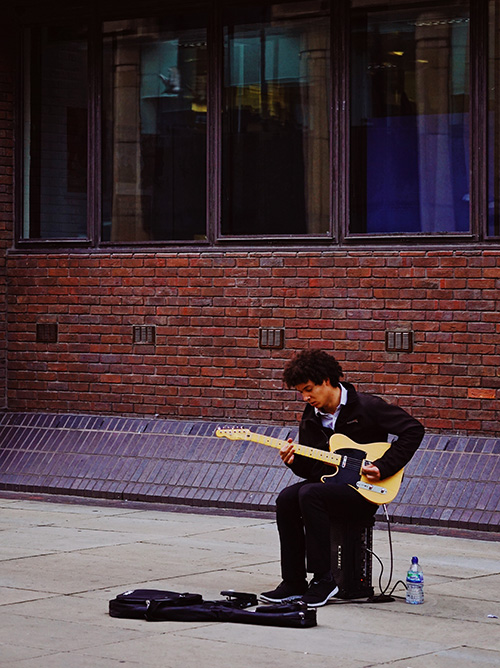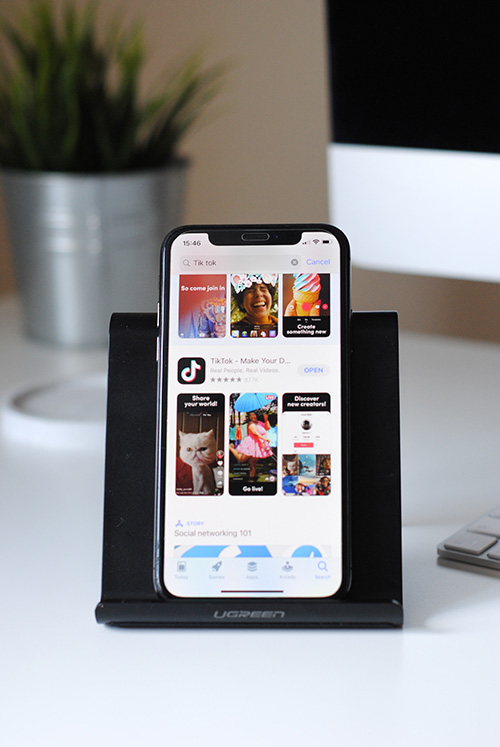Header photo by Maaria Lohiya on Unsplash
Last week was World Music Day. This got us thinking: how are musicians making the most of cyberspace? Post-pandemic, everyone seems to be moving online. If you want to be seen, you have to do it on the web. What does this mean for music?
From recorded/streamed flash mobs to TikTok, Twitch and YouTube live stream performances, it seems the music industry is adapting… fast.
Musicians in the wild

Photo by Swaminathan Jayaraman on Unsplash
We reached out to a musician friend for an insider view. An aspiring musician trying to get noticed above troves of content, his experience resonates with many.
Ants had been busking in Europe for about a year. The money he made busking was enough to survive and even travel. But the pandemic brought all of this to a grinding halt. He knew buskers in America who were playing in empty streets and not making much money. But to him, it wasn’t really about the money. “For me,” he says, “it’s all about the feeling you get from people enjoying your music.”
Ants describes how the industry has changed. He chuckles: “Back in the day – BC: before Covid – the way to make a success of yourself as a small-time musician was through great marketing or live performances. Things don’t work like that anymore.”
He was never a huge fan of social media, but “as the music world changes, so must we all,” he says. He’s released a few singles on YouTube so far and intends to keep growing his fan base this way as he creates more songs.
Like many musicians navigating the pandemic and beyond, Ants says he and his fellow music makers have no idea what the future holds. He hopes for the chance to do things live again should things “normalise”. But until then, he and his band members practice together, exchange recordings, and share notes via Zoom. On the rare occasion everything syncs up without lag, they can practice with a bit more fluidity.
Let’s get social
At Chaptr, we’ve explored various social media platforms to understand the challenges facing musicians better. It’s clear the established bands and musicians take up a lot of room on platforms like YouTube and Facebook.
The two platforms combined have around 4 billion users. It’s almost impossible to wrap one’s head around.
The exposure on these platforms – and, indeed, all over the web – can be absolutely mind-blowing. It gives content and performances that would otherwise not reach more than a handful of people, a huge audience. And it creates recognition hitherto undreamed of.
Musicians like Ants are starting to find their voice online, carving a digital space for themselves amidst the noise of the web. It can be tricky, though, to rise above the noise online when there are already so many established artists on the web.
Pay to play
On the other hand, the sheer volume of content also means that your content could get drowned out. So musicians may struggle to get noticed at first. This is where it pays to pay. Content creators who want to make themselves more visible when they’re starting out tend to pay for advertising. This is sometimes referred to as or “bumping” up their channels. Effectively, this makes the content they create more visible on the home pages of their chosen platforms.
Understanding the algorithms

Tik Tok and similar platforms make music more accessible | Photo by Hello I’m Nik on Unsplash
YouTube creators have to work hard to keep their channels up to date at all times. This is true for many other similar platforms, too. Content is king, after all. These creators tailor their advertising strategies to their target audience. When you consider that close to 500 hours of content is uploaded to YouTube alone every single minute, it’s clear creators have to be both efficient and consistent.
Buy it, earn it, own it
Musicians and other performers are turning to the internet now more than ever – with good reason. With the constant change of expectations and culture, it’s almost impossible to stay relevant without an online presence. From album reviews to live streams and podcasts artists are taking initiative and making themselves visible anywhere and everywhere.
It makes sense to pay to play in the early days, while you’re building a following and raising brand awareness. In the longer term, though, earned and owned media are much more sustainable.
You can earn a following in two ways: social media, and search engine optimisation (SEO). Ideally, do both. Great, original content will always do well in search engine results, and is likely to attract an audience on social platforms, too. An effective digital marketing strategy will encompass all three – paid ads, social media content, and earned traffic that takes people to your own content.
Owned media builds longevity
For your brand to grow online, a website you own – that doesn’t fall prey to the whims of social platform administrators and algorithms – can be a valuable instrument for musicians in the UK. That’s why we’re working with the Oxford Philharmonic Orchestra and the Music Halls Project to help them reach their audiences wherever they may be – even during a pandemic.
Click the links to learn more about these projects. If you’re just getting started as a musician, we hope these tips are useful and we’re excited to see your music take off online. If you’re an established artist looking to raise the bar with your website and digital marketing strategy, then contact us to find out how you can get your own website and start reaching your audience online.